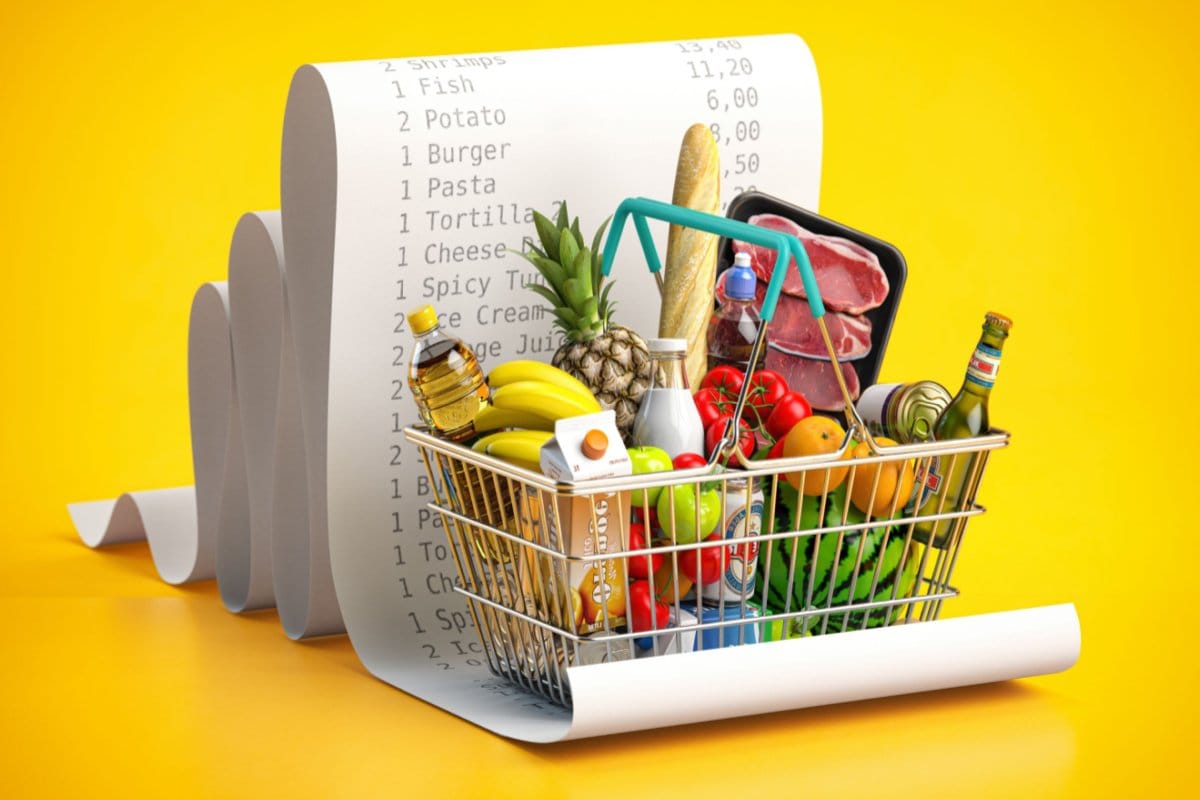10 Clever Ways to Eat Healthy on a Tight Budget

As we're all feeling the effects of rising inflation, groceries are up by about 12 percent compared to last year, and some categories are up even more than that.
With rising prices on staples like eggs, beef, milk, and others, savvy shoppers may spend less than they did before. If your typical grocery budget was $500 per month, it could be $560 now.
However, there are several ways to save money on groceries even if inflation is eating away at your wallet. Here are some tips for cutting down on costs at the grocery stores.
1. Make a plan
Planning saves you money because it helps you avoid impulsive purchases. For example, making a grocery list helps you plan meals so you don't buy foods you won't eat.
It makes sense to keep things simple by using what you already have rather than buying something new.
Planning out meals for the week not only helps you cook more at home without relying on restaurants or fast food joints, but it also makes sure you don't skip breakfast or lunch so you're not hungry when you get home from work.
Don't have to be complicated, just write out some basic recipes and then shop for the ingredients.
2. Buy organic when you can afford it
Eating more fruits and veggies doesn't necessarily mean eating more expensive foods; there are ways to stretch a budget and still get plenty of fruit and vegetable servings.
Buying fresh fruit and vegetables is a great option, but buying frozen, canned, or dried ones is another good one. Choose low-sugar and low-salt options whenever possible.
You may want to consider replacing an expensive ingredient with something less costly. For example, swap kale for spinach in a stir fry dish, use canned beans instead of dried ones in chili or use frozen strawberries instead of fresh ones in strawberry lemonade.
Make sure you actually eat what they sell you. That’s why frozen and canned produce is good staples but use them up first so you don't waste money.
You can freeze fruits and vegetables for later use, and add them to soups, fried dishes, or scrambled eggs.
3. Search for sales
Some of us are also already adept at using coupons and checking out the weekly sales flyers. However, if you haven't yet started, it's not too late to begin. Most grocery stores offer deals throughout the store, so combining them with coupons can really help you save money.
If you shop online, use a coupon code when you place an order or filter products by what’s on sale. If you go to a grocery store frequently, sign up for its reward program.
One of my favorite strategies is to look at what's on sale first, then use those items in my meals for the week. I also check for coupon codes for foods I normally buy.
4. Check unit prices
If you don't know what a unit price means, you should. It's located on the shelf next to the price of the product and helps you to compare sizes and different brands better.
If you're buying cereal every week, it might make sense to get the larger box, which will cost you more upfront but is going to be less expensive per ounce than the smaller box. You can use unit prices to see if the price difference between boxes makes sense for you.
You can also use scanning units to compare prices across different brands of packaged foods.
5. Rethink your protein
Meat, poultry, and seafood are often among the most expensive items on our dinner tables. However, there are ways to save money without sacrificing these foods.
It’s certainly true that many plant-derived protein sources, like beans and tofu, are cheaper than meat. Try eating one or two meals without meat to see if they fit into your budget better.
Choosing cheaper cuts of meat can also help. For example, choosing ground meats, top round steak, or chicken thighs (instead of the breast) are ways to help reduce cost. You may find out that your local butcher offers discounts or price matching. Compare prices online before heading to the store.
Because proteins are expensive, if you have room in your freezer, then it might be worth buying them at a discount when they go on sale. Then just put them in the freezer until you want to use them.
You can also add vegetables and grains to your meats when making them into dishes like stir-fries, burgers, or casseroles.
Protein shakes don't need to be all or nothing; they just need to be small changes that add up over time.
6. Know when an item expires
When I was growing up, my grandmother didn't throw out food even if it looked old. I once tried to throw out some yogurt I thought had expired and she quickly told me not to waste it.
Food doesn't always stay fresh forever; sometimes, it goes bad. However, the date on the package represents the quality of the product, not its safety.
Foods are usually labeled with best if used by, sell-by, use-by, or freeze-by dates that indicate freshness.
Make sure you check out the expiration dates for everything you buy. You don't want to be stuck with expired items.
Treating dates as hard and fast guidelines for throwing out food isn’t necessary. However, paying attention to them can help you save money by making sure you buy foods at their best prices.
7. Check your refrigerator and freezer for expired foods
When it seems like there’s nothing to eat in the house but you don’t want to go out to buy something new, turn to what you already have and make a list. Shop from what you have instead of buying something new.
You don't need to spend a lot of time planning meals. Just use some basic ingredients to create something delicious.
Keeping an eye out for expiring foods will help you use them up before they go bad.
8. Buying in bulk when it makes sense is an effective way to save money.
Buying too much of anything isn't the best idea; buying too much at once means you're spending a lot upfront. Costco, Sam's Club, and BJ's offer great deals on groceries, so check them out if you need some help saving money.
They can be particularly useful for larger families who need to store lots of food. Even if they're not preparing meals for a crowd, they might find that it makes sense to buy certain staples in bulk because of the substantial cost savings.
Buying larger sizes when shopping for groceries can help you save money.
9. Switch your store
If you're loyal to one particular grocery store, you might want to consider shopping at different stores depending on their sales.
Also, some grocery stores offer special deals on groceries. For example, Dollar General offers great discounts on groceries. And even dollar stores sometimes have good deals on groceries.
For most people, it’s not feasible to go shopping at different stores because of where they live and how easily accessible their groceries are. However, if you can mix up which store you visit, you might be able to save some cash.
10. Rethink “convenience”
Yes, there are times when we pay a premium for convenient products. Think of things like pre-cut produce or prepared sauces.
However, sometimes these convenience foods actually turn out to be worth it, and they mean you're eating a home-cooked dinner instead of having to eat out again or let things in your refrigerator go to waste.
You don't want to put too much effort into cooking; just pick something easy and convenient. Make sure you're paying for quality ingredients, though.
You don't always need to pay extra for convenience when shopping for groceries. Check out the prices at different stores and choose the one with the lowest price per item.
You may need some help from the store, but be careful not to use that convenience for too much. Use it to your advantage so that you can cook more at home and save money.
Sign up for FD's newsletter
The freshest stories from the food and dating world every week.




